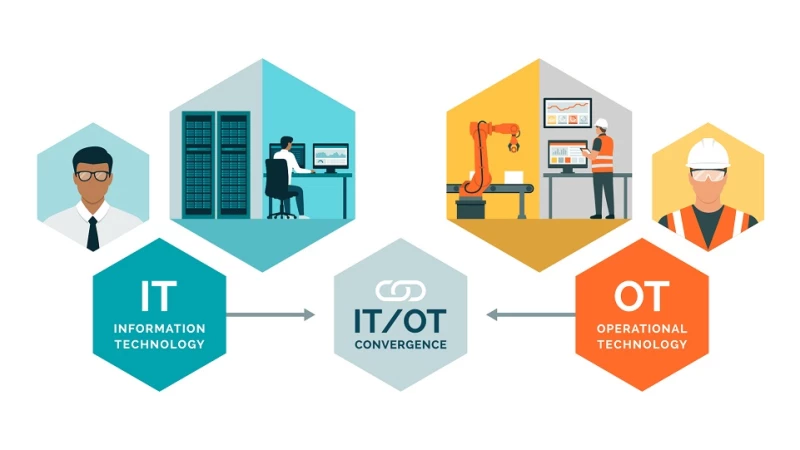OT Security Definition

Operational Technology (OT) security refers to the practices, technologies, and measures designed to protect operational technology systems, which are used to monitor, control, and manage industrial processes, from cyber threats. OT systems are typically found in critical infrastructure sectors such as energy, water, transportation, and manufacturing, where they play a crucial role in ensuring the reliability, safety, and efficiency of operations.
The primary goal of OT security is to prevent unauthorized access, use, disclosure, disruption, modification, or destruction of OT systems and the data they process. This is particularly important because OT systems often control physical processes that can have significant consequences if compromised, such as disruption of power generation, contamination of water supplies, or derailment of trains.
OT security is distinct from Information Technology (IT) security, although the two are increasingly interconnected. IT security focuses on protecting information systems and data from cyber threats, whereas OT security focuses on protecting the physical processes and systems that are monitored and controlled by OT systems. However, as OT systems become more connected to IT systems and the internet, the distinction between OT and IT security is becoming less clear-cut, and a converged approach to security is often necessary.
Threats to OT Security
OT systems face a range of cyber threats, including:
- Malware and Ransomware: These can compromise the availability and integrity of OT systems, leading to operational disruption or even physical damage.
- Unauthorized Access: Gaining unauthorized access to OT systems can allow attackers to manipulate processes, steal sensitive information, or disrupt operations.
- Denial of Service (DoS) and Distributed Denial of Service (DDoS) Attacks: These can overwhelm OT systems, making them unavailable and thus disrupting the operational processes they control.
- Advanced Persistent Threats (APTs): Sophisticated, targeted attacks designed to evade detection and persist on OT systems over time, often with the goal of espionage or sabotage.
- Insider Threats: These come from individuals with authorized access to OT systems who may intentionally or unintentionally cause security breaches.
Best Practices for OT Security
Implementing robust OT security measures involves several best practices, including:
- Risk Assessment and Management: Identifying potential risks and vulnerabilities in OT systems and implementing strategies to mitigate them.
- Segmentation and Isolation: Segregating OT systems from the internet and other networks to reduce the attack surface.
- Access Control and Authentication: Implementing strict access controls, including multi-factor authentication, to ensure that only authorized personnel can access OT systems.
- Regular Updates and Patching: Keeping OT systems and their components up to date with the latest security patches.
- Monitoring and Incident Response: Continuously monitoring OT systems for signs of compromise and having a plan in place to respond quickly and effectively to security incidents.
- Training and Awareness: Ensuring that personnel understand OT security risks and best practices.
- Convergence of OT and IT Security: Integrating OT and IT security practices to address the interconnected nature of modern operational environments.
Future of OT Security
The future of OT security is likely to involve increased adoption of advanced security technologies, such as artificial intelligence (AI) and machine learning (ML), to detect and respond to threats more effectively. There will also be a greater emphasis on securing the supply chain, as the interconnectedness of OT systems with other networks and devices increases the risk of vulnerabilities being introduced through third-party components or services.
Furthermore, regulatory efforts and industry standards, such as those provided by the International Electrotechnical Commission (IEC) and the National Institute of Standards and Technology (NIST), will continue to play a crucial role in guiding OT security practices and ensuring a baseline level of security across industries.
Ultimately, protecting OT systems from cyber threats requires a comprehensive, multi-layered approach that combines technological, procedural, and personnel security measures. As OT systems continue to evolve and become more interconnected, the importance of robust OT security will only continue to grow.
Expert Insight: The convergence of OT and IT security is not just about technology; it's also about culture and practice. Organizations must work to break down silos between OT and IT teams, fostering a collaborative environment where both sides understand each other's challenges and priorities.
Conclusion
OT security is a critical component of modern industrial operations, ensuring the reliability, safety, and efficiency of critical infrastructure. As the cyber threat landscape continues to evolve, adopting a proactive, multi-faceted approach to OT security is essential for preventing disruptions, protecting public safety, and maintaining the trust of stakeholders.
In the realm of OT security, there is no one-size-fits-all solution. Each organization must conduct thorough risk assessments, tailor their security strategies to their specific needs, and stay vigilant in the face of emerging threats. By doing so, they can help ensure the resilience of their operational technology systems and the continuity of their critical operations.
What is the primary goal of OT security?
+The primary goal of OT security is to protect operational technology systems from cyber threats, ensuring the reliability, safety, and efficiency of industrial processes and critical infrastructure.
How does OT security differ from IT security?
+OT security focuses on protecting physical processes and systems monitored and controlled by operational technology, whereas IT security focuses on protecting information systems and data from cyber threats.
What are some best practices for OT security?
+Best practices include risk assessment and management, segmentation and isolation, strict access controls, regular updates and patching, monitoring and incident response, training and awareness, and the convergence of OT and IT security practices.



